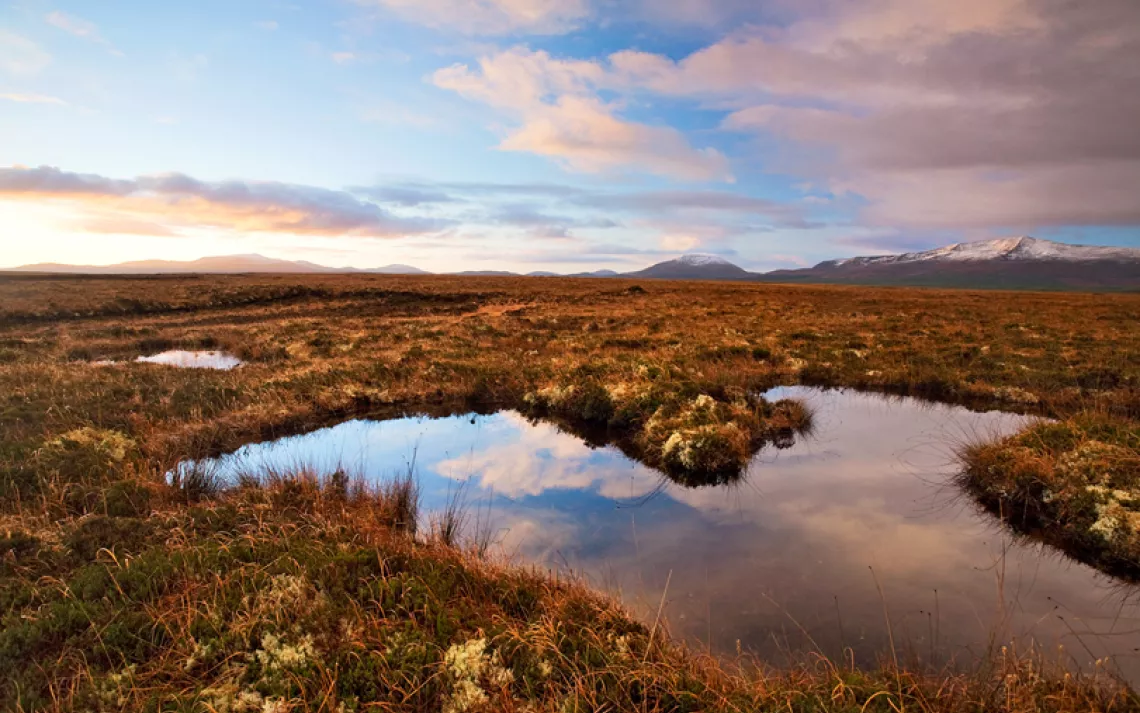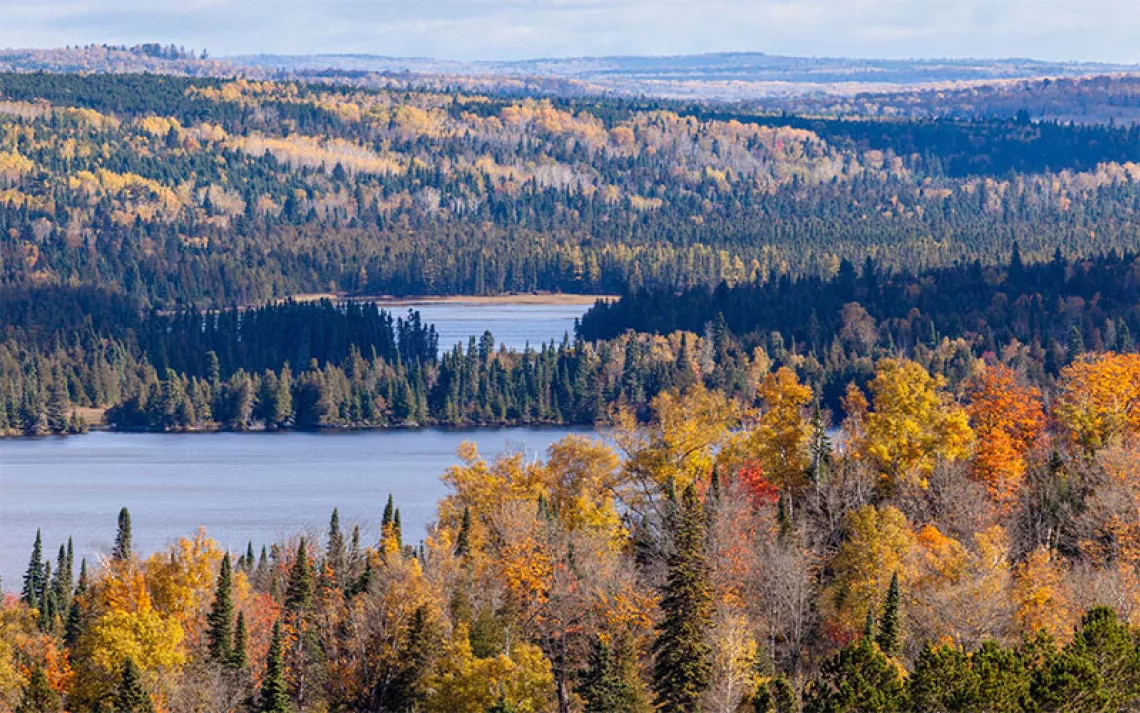Those Not-So-Wild Europeans
Re-creating wilderness on a continent that has almost none

Looking across Ballycroy National Park to the Nephin Beg Mountains, which are at the heart of Ireland's first wilderness area. | Photo by Gareth McCormack
In Ireland's blustery Nephin Beg Mountains, the state-owned forestry company Coillte is rewilding roughly 11,000 acres of pine and spruce plantation. By thinning the canopy, closing logging roads, and establishing a system of shelters, it hopes to turn this industrial forest and parts of neighboring Ballycroy National Park into a 27,000-acre recreational wilderness. Coillte won't fully liberate the forest to natural processes for another 14 years. But when it does, this will be a rare parcel of European land unmanaged by humans.
"We actually want our landscape to become one where there are no humans driving the changes," says Bill Murphy, who's overseeing the project for Coillte.
Nobody is certain how much wilderness Europe has left, but the best estimates say it's 1 percent or less. Most of this land is in the east, where bison roam Poland's Biaowie'za Forest, old-growth trees carpet the Carpathian Mountains, and taiga blankets the Russia-Finland border. The rest of Europe has been paved, cultivated, grazed, logged, urbanized, or otherwise degraded.
Definitions of "wildland" and the laws protecting it vary across the continent. Europe has no shared wilderness literature or history, says Mark Fisher, an honorary research fellow at the Wildland Research Institute; there is no European Muir or Leopold. While America's early preservationists were idealists who fought to protect wild places from development and safeguard the public's right to explore them, their European counterparts were instead driven by the science of conserving species and habitats.
The planned wilderness in the Nephin Beg Mountains, called Wild Nephin, is part of Western Europe's nascent rewilding movement. In Germany, the Brandenburg Wilderness Foundation is returning vast military camps to the wild, while in Scotland, the nonprofit Trees for Life is restoring Caledonian Forest to highlands. All three projects are guided by the principle that nature can take over again, so long as it gets a leg up.
Until now, hikers have shared Nephin's forest tracks with logging trucks. But Coillte plans to cease commercial logging, shut out motorized vehicles, and turn forest roads into rough trails. When rewilding is complete, backpackers will be able to hike through Ireland's most extensive wild forest, camp in backcountry shelters, and explore a roadless expanse of woods, mountain, and bog with no trace of human habitation or modern infrastructure.
It's a paradox, of course, that such rewilding requires human intervention. But if Europe succeeds, hearts and minds may follow, and Nephin's resurrected forests, bogland, and rivers could serve as a glimpse of Europe's modern frontier.
 The Magazine of The Sierra Club
The Magazine of The Sierra Club






